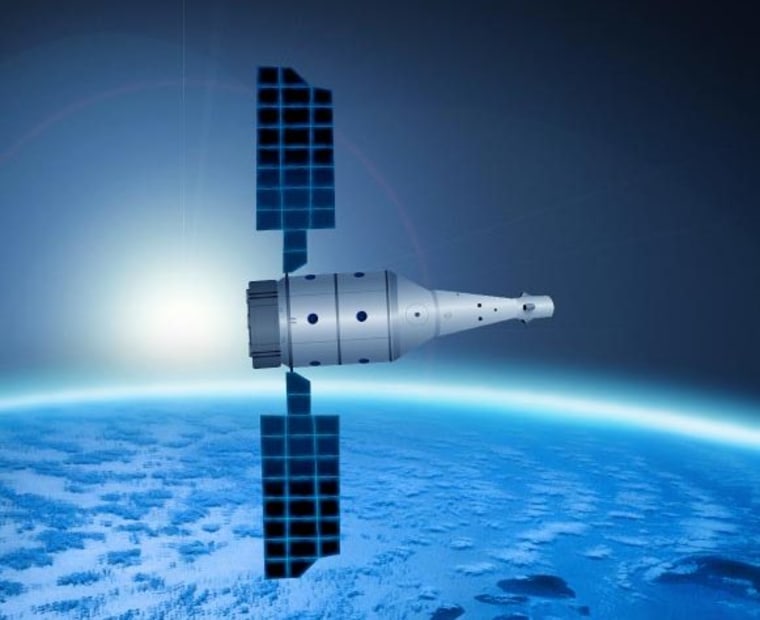An international spaceflight company plans to launch paying passengers on weeklong orbital trips by 2013 using vehicles based on Soviet-era spacecraft built for classifed military space stations.
Excalibur Almaz Limited, based on the Isle of Man, has acquired several Reusable Return Vehicles, or RRVs, spacecraft initially designed for flying cosmonauts to the former Soviet Union's super-secret Almaz space stations of the 1970s, the firm announced Tuesday at the Moscow Air Show in Russia.
"With this announcement, the dream of private orbital space exploration may become a reality in the very near future," veteran Russian cosmonaut Vladimir Titov, an adviser to Excalibur Almaz, said in a statement.
To date, wealthy space enthusiasts have been able to book trips to orbit by riding as paying passengers on Russian Soyuz spacecraft headed for the international space station during crew exchange missions. Those trips, arranged by the Virginia-based firm Space Adventures and Russia's Federal Space Agency, currently cost more than $30 million.
Excalibur Almaz did not reveal its anticipated price per trip in Tuesday's announcement, but did detail plans to update the RRV spacecraft design with modern technology to support independent flights to orbit.
The spacecraft consists of two sections, the cone-shaped RRV for launch and re-entry, and an expendable service module designed to offer more room to live and work in space. The vehicles can carry three people — a commander and two passengers — or about 1,100 pounds (500 kilograms) of cargo and are designed to stay aloft for at least a week, officials said.
"A critical feature of the RRVs is their reusability, which will reduce logistical, overhead and program costs for commercial access to space," Excalibur Almaz officials said, adding that the spacecraft will be designed to fit atop a variety of launch vehicles in order to lift off from different sites around the world.
The company is working with the original Almaz station manufacturer, Russia's NPO Mashinostroyenia (or NPOM), to overhaul its stock of launch vehicles and space stations, company officials said. The spacecraft will be updated to meet customer needs for space exploration, cargo delivery or orbital research in microgravity, they added.
NPOM designed, tested and flew several Almaz space stations and RRV prototypes in the 1970s. The first Almaz (which means "Diamond" in Russian) station to reach orbit was christened Salyut 2, but failed in 1973. Two others, dubbed Salyuts 3 and 5, later flew with much success. The RRVs flew about nine test flights, with two vehicles reaching orbit repeatedly, Excalibur Almaz officials said.
The effort is an international endeavor with members in Russia, the United States, Europe and Japan. Former NASA astronauts — such as veteran spacefliers Leroy Chiao and Franklin Chang-Diaz — as well as veteran space officials and cosmonauts are listed among the company's top leadership and advisors.
Because of that international involvement and expertise, Excalibur Almaz "is in a unique position to initiate a new era of private orbital space exploration," said the company's founder and CEO, Art Dula, a veteran attorney specializing in aerospace issues.
More on |
